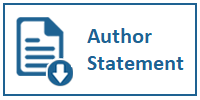Apakah Youtuber Indonesia Kena Bully Netizen?
DOI:
https://doi.org/10.31937/si.v11i2.1764Abstract
This study will examine the cyberbullying phenomenon that was experienced by Indonesian Youtubers in their Instagram comment section. Cyberbullying is the use of electronic communication to bully a person, typically by sending messages of an intimidating or threatening nature. Youtubers are the subject of this research due to their massive following, who constantly responds to every content posted on their Instagram page. The algorithm chosen to conduct this sentiment analysis was Support Vector Machine (SVM) due to their high accuracy percentage. The data used in this analysis was retrieved from 10 Indonesian Youtuber Instagram accounts. In order to analyze this data, several step was done including text mining, data cleansing, data modeling and applying model to test data. The result of analysis using an SVM model with an accuracy of 81.2% is 49.524% of comments on an Indonesian Youtuber comment section are considered as cyberbullying.
Downloads
Downloads
Published
How to Cite
Issue
Section
License
Authors retain copyright and grant the journal right of first publication with the work simultaneously licensed under a Creative Commons Attribution-ShareAlike International License (CC-BY-SA 4.0) that allows others to share the work with an acknowledgement of the work's authorship and initial publication in this journal.
Authors are able to enter into separate, additional contractual arrangements for the non-exclusive distribution of the journal's published version of the work (e.g., post it to an institutional repository or publish it in a book), with an acknowledgement of its initial publication in this journal.
Copyright without Restrictions
The journal allows the author(s) to hold the copyright without restrictions and will retain publishing rights without restrictions.
The submitted papers are assumed to contain no proprietary material unprotected by patent or patent application; responsibility for technical content and for protection of proprietary material rests solely with the author(s) and their organizations and is not the responsibility of the ULTIMA InfoSys or its Editorial Staff. The main (first/corresponding) author is responsible for ensuring that the article has been seen and approved by all the other authors. It is the responsibility of the author to obtain all necessary copyright release permissions for the use of any copyrighted materials in the manuscript prior to the submission.















